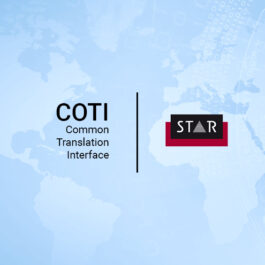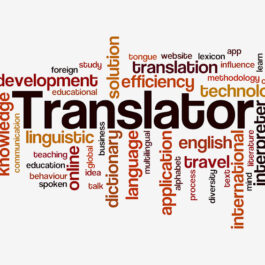Another year is drawing to a close, and we can hardly believe how fast the time has flown by. Now is a good opportunity to take a look back at all of the important developments that 2024 – the year of AI – has brought us, and give you an insight into what next year has in store for us.
AI has been a hot topic ever since OpenAI stunned the whole world with ChatGPT. Companies are increasingly insisting on using AI wherever this seems possible. From many discussions and exciting customer projects over the course of the year, we have identified key lessons learned and trends in this field.
Five key trends relating to the use of AI in the context of translation
- Expectations for generative AI remain very high.
However, the purposes for which people want to use it differ greatly, especially in language processes: From the fanciful idea of a wonder machine which produces, translates and optimises texts so they are perfect, through to a clever tool that provides targeted assistance with specific tasks that are usually performed manually at present. The increasing integration of large language models into translation processes makes exactly this possible by providing these with targeted and modular support. This ranges from the bilingual extraction of terminology and the post-editing of machine-translated content, through to assessing the quality of multilingual documents. - If you want to use the terminology efficiently and sustainably, you also need high-quality, well-structured language resources to be able to supply the language models with relevant information.
This means that years of working with translation memory and terminology management systems now offers double the benefits. If this data is prepared in a structured and sustainable manner, language models can use it to optimise machine-translated content, for instance in the form of retrieval-augmented generation (RAG). - The topic of data protection continues to generate extreme uncertainty despite the adoption of the EU AI Act in May 2024.
Many companies are looking for ways to use AI in the most secure possible way in order to protect their precious data against misuse. - A lot of businesses are experiencing issues with the scalability of AI solutions, whether this concerns the IT infrastructure, financial resources or further training of staff.
- Human in the cockpit. People will increasingly return to the centre of the AI-based translation workflow.
While translators were previously responsible for the post-editing of predefined machine-translated content, among other tasks, as part of human in the loop concept, the new human in the cockpit principle aims for translators to use modern language technologies – even interactively – in order to exert their own influence on the output and to create efficient design processes.
The technological transformation is also resulting in changing requirements for current and future language experts. The relevant universities have also recognised these developments and are revising the degrees and courses they offer accordingly. For instance, prompt engineering, language technologies and information management are important focal topics that will feature more often on the curriculum in future.
Are you interested in this subject? Then don’t miss our STAR webinar, which is scheduled for early 2025. There, we will be sharing information about current trends and our latest technological developments.
























